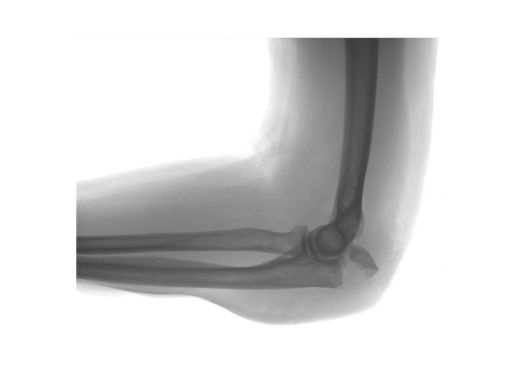Elbow Fracture Specialist

The olecranon is the bony tip of the elbow and is one of the three bones that form the elbow joint. An olecranon fracture can occur from a direct blow to the elbow, or from a serious fall. Elbow fractures can make it difficult to move the arm and are very painful. Orthopedic elbow specialist, Doctor James Mazzara, provides diagnosis and both surgical and nonsurgical treatment options for patients in Manchester, South Windsor, Enfield, Glastonbury and surrounding Hartford communities who have have broken their elbow or suffered an olecranon fracture. Contact Dr. Mazzara’s team today!
What is an olecranon fracture?
The elbow is made up of three bones that come together in the forearm to form the hinge-type joint. The distal humerus (lower end of the upper arm bone), the radial head (knobby end of the radius where it meets the elbow) and the olecranon (the end of the ulna that “cups” the humerus, creating the hinge motion of the elbow. The olecranon can be felt easily, because it is covered by a thin layer of skin and tissue. An olecranon fracture occurs when the bony prominence, or the tip of the elbow breaks. This can occur from a fall or a direct blow to the elbow. An olecranon fracture can make it difficult to move the arm and is typically very painful. Dr. James Mazzara, orthopedic elbow specialist serving Manchester, South Windsor, Enfield, Glastonbury and the surrounding Hartford, Connecticut communities, has extensive training and experience in diagnosing and treating olecranon fractures.
What are the symptoms of an olecranon fracture?
Olecranon fractures are usually accompanied by a sudden, intense pain at the time of injury, other symptoms include:
- Swelling at the bony portion at the back of the elbow
- Tenderness when touched
- Bruising at the elbow that can travel up or down the arm
- Numbness or tingling in the fingers
- Inability to fully straighten the elbow
- Limited range of motion
- Felling like the elbow will “pop out” of joint
How are elbow fractures diagnosed?
Dr. Mazzara will obtain a patient history and inquire about the events leading up to the fracture. He will carefully move the arm and palpate the arm to determine if the elbow is dislocated or broken. He may ask the patient to move their fingers, if possible, while monitoring pain levels. An x-ray will most-often show a break in the bone, however an MRI may also be necessary to check for additional soft-tissue damage.
Click to Enlarge Image
What is the treatment for a broken elbow or an olecranon fracture?
The treatment for an olecranon fracture will depend greatly on the severity of the break. If the bones are displaced and if there is joint involvement, surgery may be necessary. Fractures that are in place may be treated non-surgically.
Non-surgical Treatment:
For elbow fractures that are not displaced, Dr. Mazzara may recommend a sling or a splint to keep the elbow in place while it heals. Frequent x-rays will be necessary to ensure the bones are healing in the proper position. A splint is typically worn for 3 to 6-weeks and physical therapy is recommended after the bone has healed.
Surgical Treatment:
Large, displaced or open (when the bone punctures through the skin) elbow fractures require surgery. The goal of olecranon surgery is to place the pieces of elbow back into the proper position and to keep them in place for proper healing. Dr. Mazzara may perform an olecranon fracture fixation. This procedure is sometimes called an ORIF or Open Reduction and Internal Fixation and involves realigning the bone fragments to their correct anatomical position. Dr. Mazzara may use a bone graft if needed; he may also remove tiny fragments of bone that would not heal properly. Often surgical pins and a tension band may be used.
For more information on olecranon fractures or how to treat a broken elbow, please contact the offices of Dr. James Mazzara, orthopedic elbow surgeon, treating patients in Manchester, South Windsor, Enfield, Glastonbury and surrounding Hartford communities.

